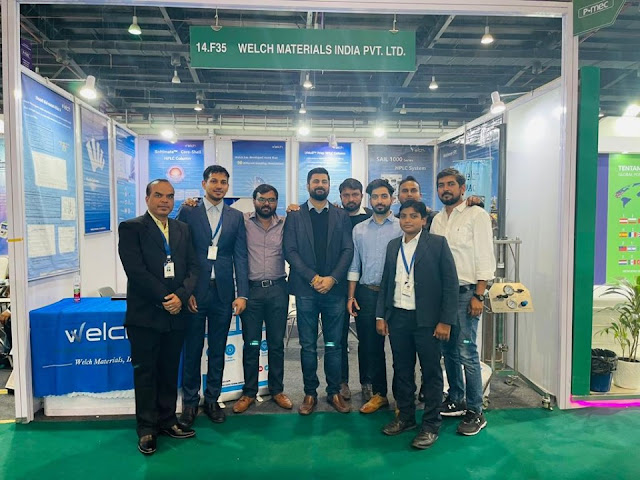Production time of vaccines vary and it may take 22 months to produce a single batch for some vaccines. The development of a vaccine is a long and complex process with high cost. In order to ensure the safety and effectiveness of the vaccine and reduce the side effects of the vaccine and immune interference of impurities, it is necessary to effectively separate and purify the vaccine, to remove other impurities in the cell culture medium, and to improve the content and purity of the effective components of the vaccine. This passage briefly introduces the current methods of vaccine separation and purification, as well as the application, development and prospect of vaccine purification technology.

There are great or small differences in the development mode, composition, physical and chemical properties and the original source of vaccines. Therefore, the methods of separation and purification are relatively special. Various separation and purification routes should be used for various vaccines, but generally speaking, there are two basic stages: primary separation and further purification. In the primary separation stage, the main tasks are to separate cells and culture solution, release products by breaking cells(if the products are inside the cells), concentrate the products and remove most impurities, etc. The optional separation methods in this stage include cell breaking technology, centrifugal sedimentation, salting out and ultrafiltration concentration technology, etc. In the further purification stage, various technologies with high resolution are used to separate the target proteins and a small amount of interfering impurities as far as possible, so as to achieve the required quality standard.
Membrane separation and super-speed centrifugal purification techniques have a bright prospect in the purification of vaccines, protein components, peptides and biological macromolecules. The purity and properties of the vaccine prepared by this process are in line with the requirements of the regulations, but it inevitably has some deficiencies include relatively low antigen recovery rate, complicated operation, long cycle and high technical equipment requirements. In recent years, it has been gradually replaced by the mature chromatography technology, especially in the development of genetic engineering vaccine.
Gel Filtration Chromatography
Gel filtration chromatography technology, also known as exclusion chromatography, gel permeation, gel chromatography, molecular sieve chromatography, etc. It is a technique of separation according to molecular size in LC and mainly used in the separation of components: desalting, changing buffer, removing harmful reagents, purifying proteins, peptides, polysaccharides and other biological molecules. It has fast speed of changing buffer, mild and high yield to replace buffer. Suitable for any buffer system.
Ion Exchange Chromatography
Ion exchange chromatography is a kind of adsorption chromatography, which can play the role of separating according to the difference of sample charge. It is widely used in all purification stages and all scale production with merits of controllable, high selection, high capacity, sample concentration and high recovery rate. Moreover, there is no perfect ion exchange. Choosing the right ion exchange medium is very important. Different samples and purification purposes require different ion exchange media. In addition, it is important to note that samples need pretreatment before loading: particulate removal (centrifugation or filtration method), pH adjustment and ionic strength adjustment (desalination or buffer exchange method).
Hydrophobic Chromatography
Hydrophobic chromatography is a technique based on the hydrophobicity of biomolecules in liquid chromatography. As complement of ion exchange, gel filtration and affinity chromatography, it has mild purification with invariable properties. It's also a concentration technique with characteristics of high selectivity and high recovery rate.
Affinity Chromatography
Affinity chromatography is a technique to separate biomolecules through specific interactions between biomolecules. This is a method simple to use with high purity and sample concentration. Purified proteins are more common because they are easy to use. One-step purification enables purity to exceed 95% and remove specific impurities with fast speed of separation. It is widely used to separate monoclonal antibodies and polyclonal antibodies, fusion proteins, enzymes, DNA binding proteins, and any proteins that can bind to their ligands.


The purification technology for traditional vaccines and new vaccines develop rely on the combination of related technologies of various disciplines, so far no single technology can undertake the whole process of separation and purification. The innovative separation and purification process is often composed of the advantages of a number of new technologies and original technologies. The traditional centrifugation, filtration and precipitation technologies are mainly used as the initial steps of the entire vaccine separation and purification process for the preliminary separation process. The combination of chromatography and precipitation, centrifugation and other traditional separation technologies have gradually become the mainstream of vaccine separation and purification.
Welch has an ion-exchange chromatography packing material for vaccine purification with the following characteristics:
1. A more uniform particle size distribution and an average particle size of 34 µm give it high resolution!
2. Agarose matrix enables it to resist 0.5 MPa pressure!
3. Extremely high pressure resistance enables high flow rate. With high recovery rate and high resolution ion-exchange packing material, you no longer have to worry about that high resolution ion-exchange packing material flow too slowly!
4. The substrate with small particle size has extremely high specific surface area and high load.
5. The purification process is flexible and can be used in combination with hydrophobic chromatography!
6. high load, high flow rate, high resolution, high recovery rate and long life!











Comments
Post a Comment